The Cocktail Reigns Supreme
– Dom Pérignon
Although the repeal of the Eighteenth Amendment in 1933 made wine production and consumption legal again, a desire for quality wine did not immediately follow in its wake. American preferences tended toward beer and distilled liquor, which had remained more readily available throughout Prohibition.
These were dark days for wine production and consumption in the United States. High-alcohol dessert and fortified wines appealed to American tastes; but table wines were associated with Europe, and were chiefly consumed by immigrant families. The children of these immigrants did not want to drink wine, but rather opted for beer and cocktails as a means of assimilating into American culture.
Cocktails, defined as “iced drinks of wine or distilled liquor mixed with flavoring ingredients,” actually date back to the early 1800s when brandy, gin, or rum was mixed with water, bitters, sugar or nutmeg. As America became increasingly prosperous, and as leisure time increased with the adoption of the standard eight hour work day, the hour immediately after work became known as “cocktail hour,” when people came together for good company, conversation, and relaxation.
Cocktail culture defined societal norms during the middle years of the 20th century. Americans created home bars, threw drinking parties, and became fluent in the language of liquor.
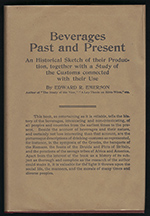 |
Edward R. Emerson. Beverages Past and Present: An Historical Sketch of Their Production, Together With a Study of the Customs Connected With Their Use. New York & London: G.P. Putnam’s Sons, 1908. [zoom] |
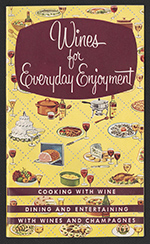 |
Taylor Wine Company, Inc. Wines For Everyday Enjoyment: Cooking With Wine, Dining and Entertaining With Wines and Champagne. [1950s]. [zoom] “You’re cooking with magic when you cook with wine.” This advertising slogan invites the public to bring the sophistication associated with wine into their everyday lives. |
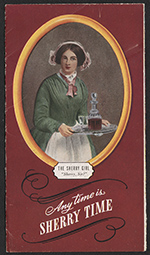 |
Williams & Humbert Sherries and Robertson Ports. Any Time is Sherry Time. London, [n.d.]. [zoom] Distillers, distributors, and wine makers frequently published advertising and recipe pamphlets to promote the use of their products. |
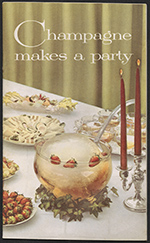 |
Taylor Wine Company, Inc. Champagne Makes a Party. [New York, n.d.]. [zoom] In this brochure, Taylor Wine Company promotes its champagnes by depicting them as the elegant drink of choice to pair with life’s most important moments. |
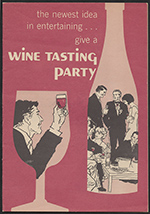 |
Wine Advisory Board. The Newest Idea in Entertaining … Give a Wine Tasting Party. San Francisco, CA, 1966. [zoom] |
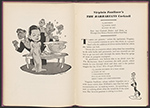 |
Carl A. Kroch and Sterling North. So Red the Nose, or, Breath in the Afternoon. New York: Farrar & Rinehart, 1935. [zoom] This book of drinking humor was co-edited by Carl Kroch of the bookstore chain Kroch’s & Brentano’s, who later provided the principal gift that enabled the construction of Cornell’s Kroch Library. The book’s title parodies the grandiose titles of Hemingway novels such as Death in the Afternoon. |
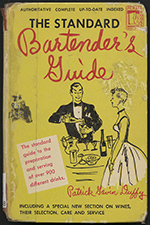 |
Patrick Gavin Duffy. The Standard Bartender’s Guide: Including a Special New Section on Wines, Their Selection, Care and Service. New York: Permabooks, 1948. [zoom] |
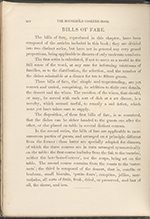 |
Urbain Dubois. The Household Cookery-book. Practical and Elementary Methods. London: Longmans, Green, & Co., 1871. [zoom] | Additional images: 
As alcohol of all types became more socially acceptable and available to all classes of society, so did the publications instructing the public on the finer aspects of preparing elegant meals from the first drink to the last. Bills of fare detailed each course with its accompanying alcoholic beverage. |
 |
New Yorker Magazine. Pronunciation Guide to French Wines. New York, October 17, 1953. [zoom] This advertisement by wine seller Barton & Guestier helps the average person to pronounce and purchase French wines with confidence. “Note: Phonetic English can only approximate Parisian French!” |